Guest Post by Eric Peters

Have you heard about Stolen Valor? It’s when a guy who spent a year or two working as The Army Guy in a Village People cover band claims he did “three tours” as a Navy SEAL. There’s a similar thing going on in the car world. You may have noticed.
Light-duty, car-based crossover SUVs with “4×4” or “4WD” badges on their liftgates.
Yes, technically, these car-based, light duty crossovers are as advertised. All four wheels are powered. But historically, “4×4” and “4WD” have meant something different.
Something more.
It is my sincere desire to provide readers of this site with the best unbiased information available, and a forum where it can be discussed openly, as our Founders intended. But it is not easy nor inexpensive to do so, especially when those who wish to prevent us from making the truth known, attack us without mercy on all fronts on a daily basis. So each time you visit the site, I would ask that you consider the value that you receive and have received from The Burning Platform and the community of which you are a vital part. I can't do it all alone, and I need your help and support to keep it alive. Please consider contributing an amount commensurate to the value that you receive from this site and community, or even by becoming a sustaining supporter through periodic contributions. [Burning Platform LLC - PO Box 1520 Kulpsville, PA 19443] or Paypal
-----------------------------------------------------
To donate via Stripe, click here.
-----------------------------------------------------
Use promo code ILMF2, and save up to 66% on all MyPillow purchases. (The Burning Platform benefits when you use this promo code.)
You’re getting something less when you buy a light-duty, car-based crossover SUV labeled as having “4WD”or being a “4×4.”
It bears some explaining.
Four wheel drive (“4WD” and its functional synonym, “4×4”) used to always mean the kind of system you found in heavy-duty trucks, or SUVs based on heavy-duty trucks – or which were designed the way heavy-duty trucks are designed.
And they are designed very differently vs. cars and crossovers based on cars.
Trucks (and vehicles based on or emulating the truck idea) are fundamentally rear-wheel-drive – even when they are four-wheel-drive.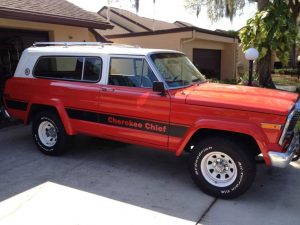
Under normal conditions, the 4WD isn’t engaged; you’re driving a two-wheel-drive vehicle – and all the engine’s power flows to the rear wheels. When the 4WD is engaged, a center differential routes half of the engine’s power to the front wheels in a 50-50 split.
But the default is rear-wheel-drive.
In a car-based crossover, it’s exactly the opposite. The default is front-wheel-drive – because most current/recent-vintage cars that serve as the basis for crossovers are FWD.
The car normally pulls rather than pushes itself along.
When the front wheels break traction, some of the engine’s power – as much as 90 percent or even more, depending on the particular system – is automatically routed to the rear wheels via a viscous coupling, which operates on the same basic principle as the clutch in a car with a manual transmission.
But the default is for the power to meet the pavement via the front wheels.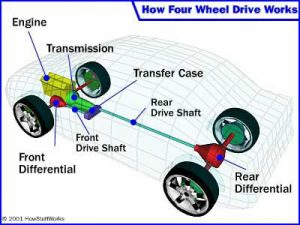
Such systems used to be marketed as all-wheel-drive, not “4WD” or “4×4” – precisely (well, honestly) because of the differences between the two systems.
And there are more differences than just which set of wheels normally pull – or push – the car along.
The next big difference is the additional gear – and gearing – that you get with a heavy-duty 4×4 system vs. an all-wheel-drive system.
The reference here is to 4WD (or 4×4) Low – a function of the two-speed transfer case, which all-wheel-drive systems don’t have. The transfer case – when engaged – multiplies the torque, or twisting force, of the engine – giving the driver additional pulling power at low speeds. This is a huge advantage when attempting to climb very steep grades, deal with uneven terrain off-road and slog through deep mud and heavy snow.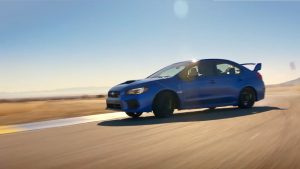
If an all-wheel-drive set-up lacks that capability, it is arguably cheesy to represent it as “4×4” or “4WD” given the historical usage and the fact that most people probably think they are getting the heavy-duty capability of a truck-type system when they hear those terms, or see the badge on the tailgate.
But that doesn’t mean all-wheel-drive is inferior.
It is simply different.
And – in some ways – superior to 4WD/4×4.
For one, all-wheel-drive is good for all the time. On dry, paved roads (and during high-speed cornering) as much as in the rain and snow. The way the system works – the way the system is designed – aids handling as much as traction. AWD is designed to move power around during high-g cornering.
4WD/4×4 of the truck-type is not designed for that.
In fact, you can damage a truck-type 4×4/4WD system by engaging it on dry, paved roads – and running the corners at full tilt. This has to do with differences in rotational speed between the inside and outside wheels as you corner – and axle bind.
AWD systems don’t bind. They have the built-in ability to slip as needed, routing the power to the wheels – individual wheels, in the better systems – that have best traction without negative impact on other wheels.
This is why high-performance sports cars have all-wheel-drive and not truck-type 4WD/4×4.
Which is also much heavier than all-wheel-drive because of the beefiness of the components and the additional components (that Low range transfer case). 4WD/4×4 can add several hundred pounds to a truck or SUV’s curb weight. The latest AWD systems generally add less than 100 pounds and many much less.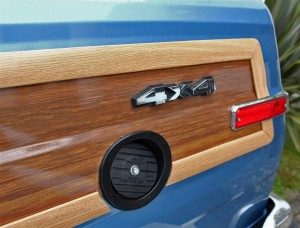
Thus, AWD also saves on fuel (and increases straight line performance) vs. 4WD/4×4 by dint of keeping the weight of the vehicle down.
All of these are definite, objective advantages which you’d think the manufacturers would tout rather than try to equate with truck-type 4WD/4×4.
But we live in the era of Cod Piece Fever – braggadocious machismo of the superficial sort. Arguably, of the stupid sort.
A running back is good at different things than a linebacker – but they are both good at what they do.
It’s the same with all-wheel-drive vs. four-wheel-drive.


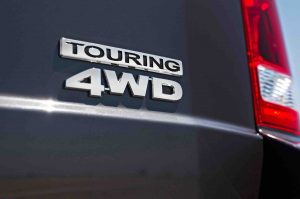


It’s too bad 4×4 trucks don’t have the option of front wheel drive. When a 4×4 is not carrying a load the ass is up in the air making it squirrely (sp) on snow or ice. Hence “tube of sand” for sale at hardware stores.
Most of the states that get enough snow to warrant four wheel drive have enough snow removal equipment to have the roads clear by commute time.
Hmmm – probably needs a bit of clarification here. If you have a limited slip differential front and rear, then you have a chance of four wheels powering down.
If you only have a rear limited slip (most of the “truck-like” 4WDs), then you only have three wheel drive.
I have had years ago a “truck-like” 4WD, with separate chassis, high and low range, but no rear LSD! This was effectively a two-wheel drive vehicle, and if you planted a rear and front tyre in the muck at the same time, they would both spin uselessly!
Utilising anti-lock brakes is good, as it emulates a limited slip differential, by stopping useless spinning.
Penforce, my friend: It might startle you that roads for non-metro men are not even plowed between 7 to 7 at night. By the time many roads are plowed it may easily be a full day later when the snowplows on asphalt or maintainers can break through. Really bad storms bring out the privately owned ag tractors which are around 14 ft wide plus additional blade width. No matter how hard you honk your horn, you might have a way slow “commute”.
Nothing wrong with a little viscous coupling.
basically true, but it does depend on the ‘couple-ee’
If I recall, Toyota has 3 or 4 different types of so-called “4 wheel drive” systems on their cars. My wife had a Matrix year ago. It had this weird logo on the back of the car that combined the word All with the number 4 to get 4ALL. Apparently even they don’t know what it is! A bit confusing for a guy who remembers 2 shift levers next to the driver and having to turn the locking hubs on for true 4 wheel drive.